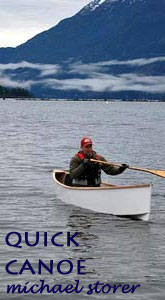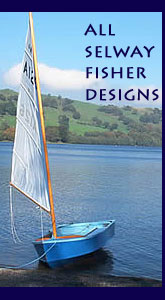
 Custom Search
|
| boat plans |
| canoe/kayak |
| electrical |
| epoxy/supplies |
| fasteners |
| gear |
| gift certificates |
| hardware |
| hatches/deckplates |
| paint/varnish |
| rope/line |
| rowing/sculling |
| sailmaking |
| sails |
| tools |
| join |
| home |
| indexes |
| classifieds |
| calendar |
| archives |
| about |
| links |
| Join Duckworks Get free newsletter CLICK HERE |
|
|
| Stirring the Epoxy Encapsulation Pot - Part Three |
by Michael Storer - Adelaide, South Australia - Australia |
Part One - Part Two - Part Three
Yes! There is super value in stirring the pot. There's some worthwhile info in them. Or I did get a nice giggle from Chief's suggestion of telephone poles. Actually Chief's example does solve the mystery of the mast moisture. Someone mentioned cracks that were repaired and cracks that appeared later. Epoxy tech only works reliably with wood that is sufficiently air dried or kiln dried. There's no difference in my book except for "soul". In the old days specialist sparmakers would put aside big timber for time sufficient for it to air dry. I THINK the rate was a year for every half inch. Kiln dried has a maximum effective thickness of 2 inches ... so anything bigger might not be well dried as well. That said, I've used some pieces that ended up rather wet inside for strip planking canoes with few problems. But if the boat ends up with glass on one side only for some time it might curl up like a dry leaf ... as one boat did. We had to rewet it and wrap it in plastic and leave it in the sun. So any spars of grown sticks will not be adequately dried and like the telegraph poles will tend to get longitudinal splits over time, which don't really affect the strength until bits start detaching or being easily detached. Just like telephone poles. You can put glue into cracks, but my own self imposed rule is if it looks structural you have to take the pieces apart enough that you can really get some epoxy goop in there.
Like John said, it will last for another generation to have to consider it and you can fix some of the fastener entry points by epoxying the fasteners in. One thing I learned from a restoration architect. I sometimes go to meet up with a group of friends. Alan is a partner (at least - he might be the founder) of Design5 architects in Sydney. Well known for all types of work but especially maintenance and restoration of landmark buildings. A common friend at the get together had bought a house, pulled the carpet up and found nice floorboards so wanted to sand and clear finish them. He asked me what to do and I said one of the hard commercial polyurethane finishes. Do it once and it is OK forever. Like a boat built out of well seasoned wood. However Alan jumped in and said "that's a bad idea". He is a quiet gentle soul so I was a bit surprised he was so direct. "The hard finish will glue the tongues and grooves together and any movement will mean the tongues are broken off the planks along one side." He went on to suggest a particular finish that was wax and oil based. So maybe there's merit in "old" tech when you can't encapsulate the piece. As one of the other participants stated earlier in the thread. It doesn't work like that for boats though. We see lots of older plywood boats built in the 50s 60s and 70s in Oz and the bits carefully glued with resorcinol and screwed with woodscrews or using ring nails have broken the glue joint and sprung off the backing ply. For each one that is in perfect condition there are 10 where you can slip more than one playing card between the stringers and ply. Bless screws and nails with alternative glues! |
To comment on Duckworks articles, please visit one of the following:
|
 |




